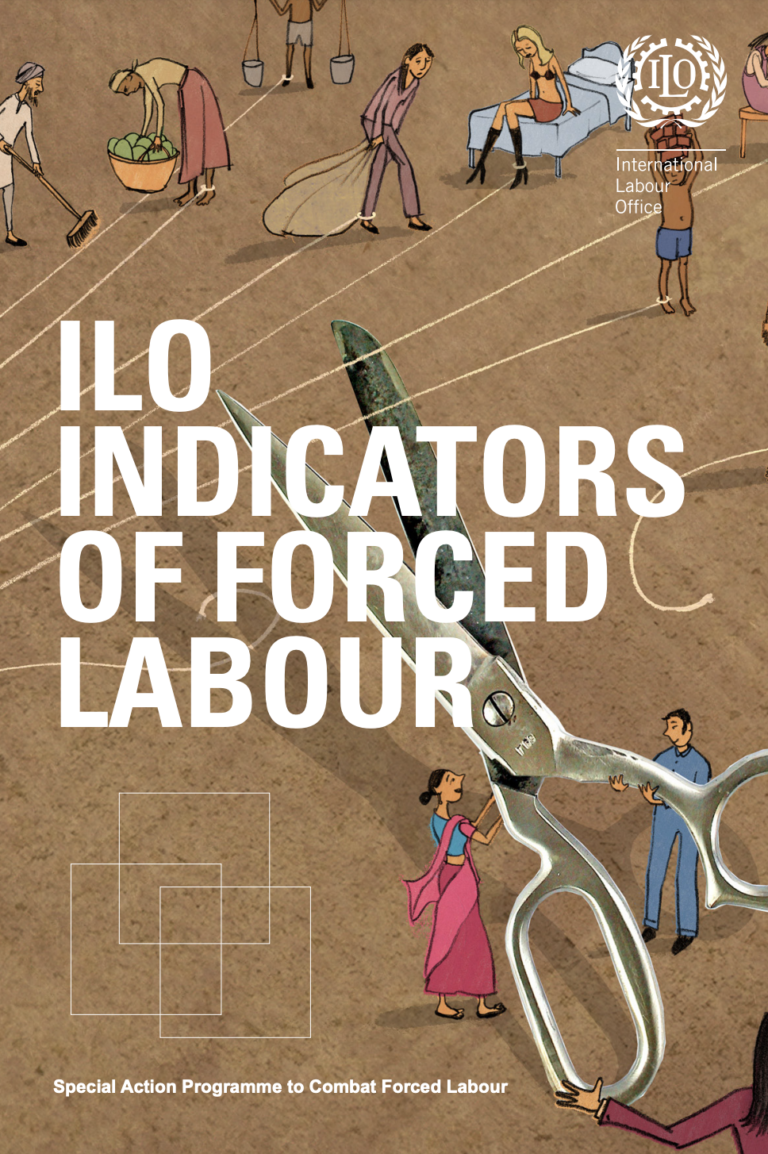This booklet presents an introduction to the International Labour Organization (ILO) Indicators of Forced Labour. These indicators are intended to help “front-line” criminal law enforcement officials, labour inspectors, trade union officers, NGO workers and others to identify persons who are possibly trapped in a forced labour situation, and who may require urgent assistance. The indicators represent the most common signs or “clues” that point to the possible existence of a forced labour case.
The indicators are derived from theoretical and practical experience of the ILO’s Special Action Programme to Combat Forced Labour (SAP-FL). They are based upon the definition of forced labour specified in the ILO Forced Labour Convention, 1930 (No. 29) as: “all work or service which is exacted from any person under the menace of any penalty and for which the said person has not offered himself voluntarily”.
The booklet presents the eleven indicators in turn, providing real-life examples to illustrate each one, accompanied by a brief explanation of what the indicator means in practice. The indicators will help you to understand how forced labour arises and how it affects its victims.

